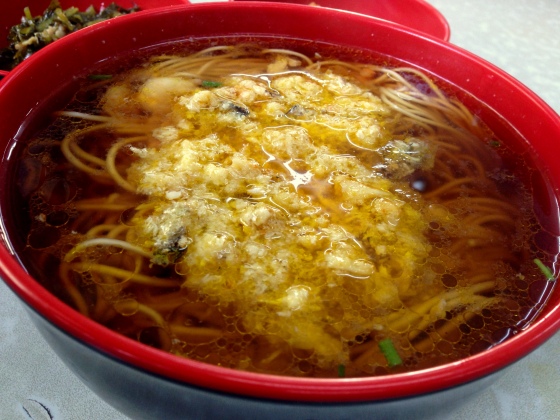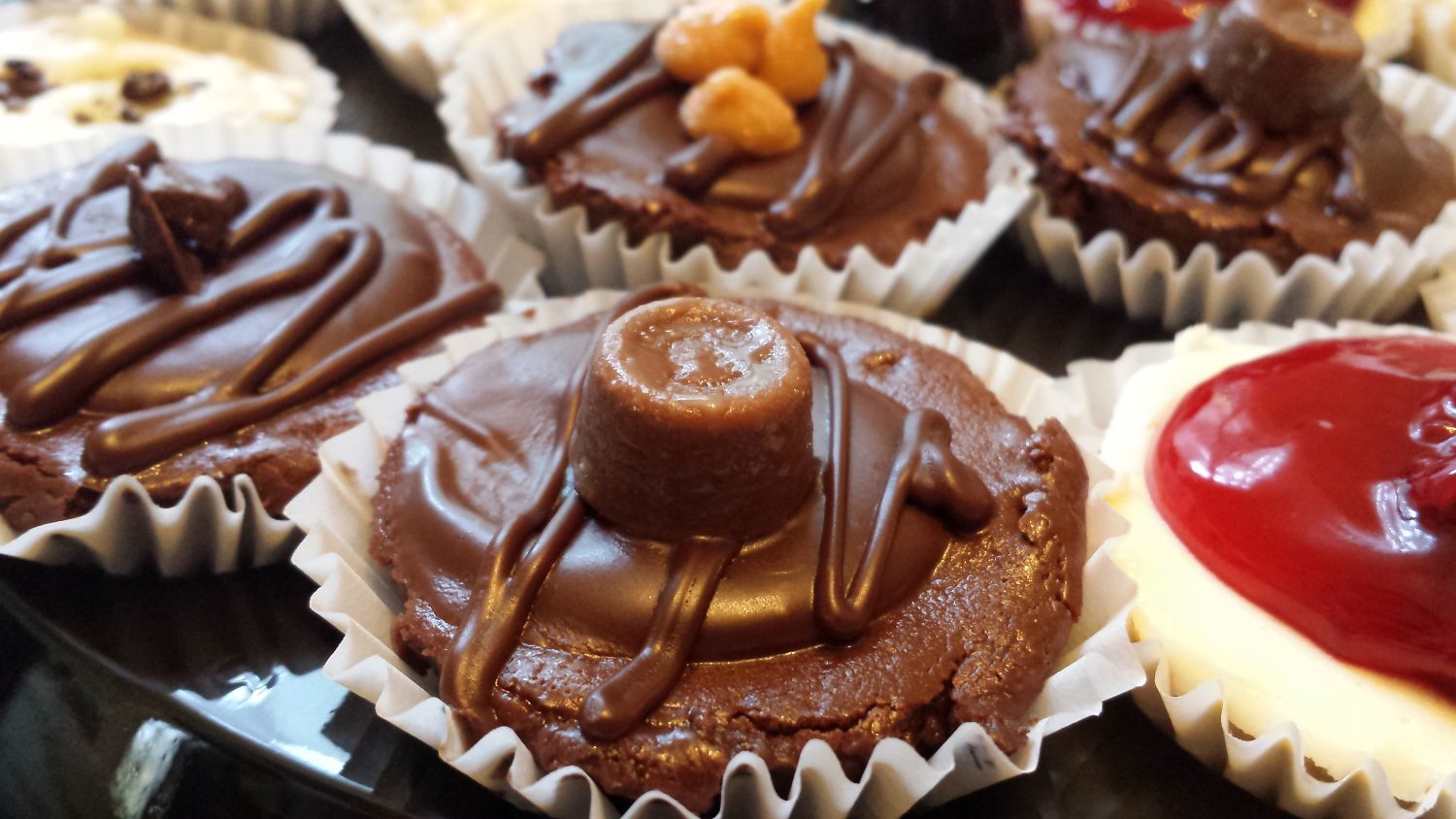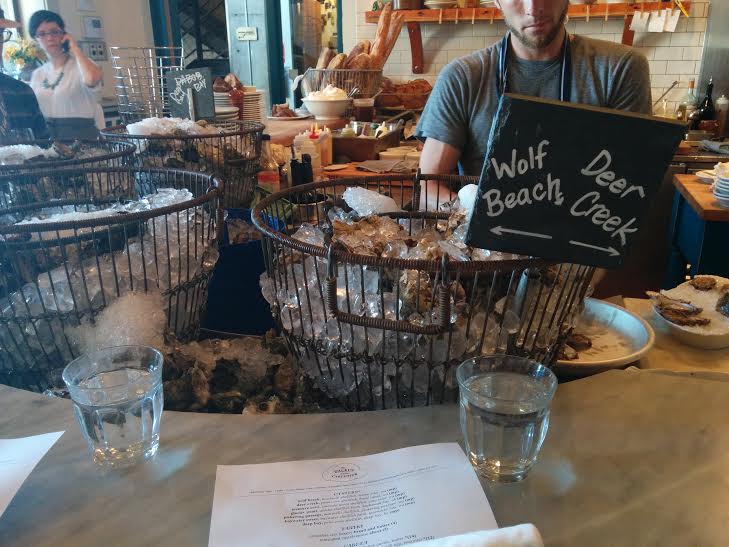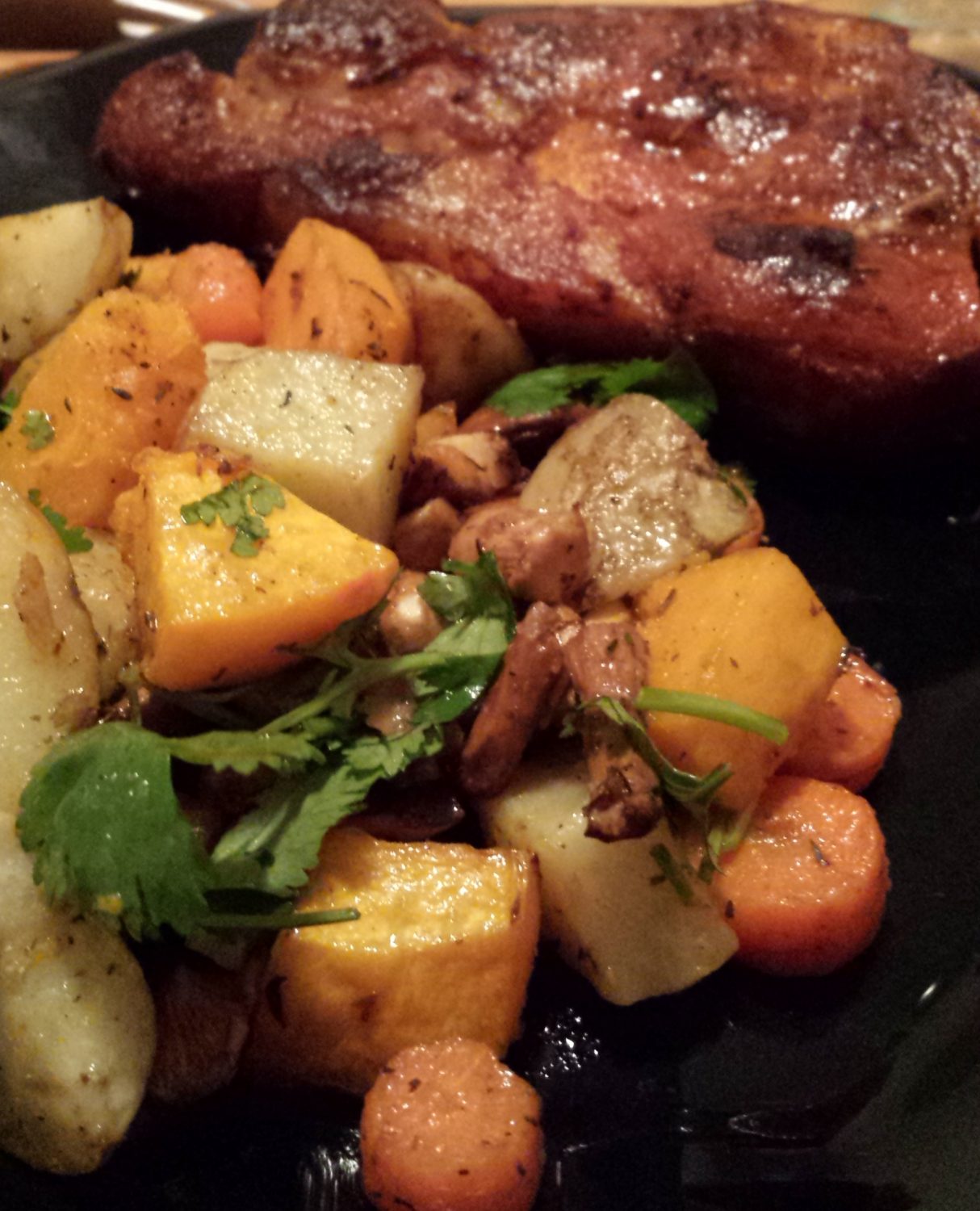End of September 2014, I was grateful to have the good fortune to do a short few months (relatively speaking) backpacking trip with friends and family which included China (Part 1, Part 2, Part 3, Part 4, Part 5, Part 6), Malaysia, Cambodia, Vietnam, Indonesia, Singapore and Korea. I’ll be writing an 12-part series of the trip on the food that was memorable enough to have made it onto my camera.
China – Part 4
Where? Shanghai
Part 4 starts with the Chen sibling crew departing Beijing to Shanghai via the G Trains, aka Gao Tie, aka HSR, aka High Speed Rail. HSR bar none is my preferred way to travel period. It’s smooth, it’s quiet and even in economy class, it’s still rather spacious unlike airplanes. Plus it usually takes you from city centre to city centre (not this case though), and there’s no security (also not in this case). My first bullet train experience was in Japan from Osaka to Hiroshima for a school trip which Camosun College graciously sponsored. I still owe them a talk on the virtues of studying abroad and I’m still game if you ever read this Camosun!
Sadly the meals weren’t free on the bullet train unlike airplanes, and by China standards they were expensive at around 40 RMB a serving, nearly $6.50! This ain’t Disneyland here!
This is what you get. It was some braised pork, rice, some veggies and a cup of soup. It was actually a great tasting and filling meal. I often wonder why Air Canada international food is so sad tasting.
The old way to get to Shanghai from Beijing takes nearly 12 to 14 hours so it’s pretty neat that the travel time is shaved down by half. The bullet train was pretty cheap for HSR standards. The one I took in Japan was $200+ USD for a round trip, roughly 2.5 hrs one way. This was about 550RMB one way, 5.5 hours, that’s only about 90 dollars!! That’s like $0.66 cents per minute in Japan vs $0.27 in China! So cheap and great value! =) We arrived in Shanghai at night and we were INCREDIBLY fortunate to have a relative doing work in China and have him pick us up.
It turns out we got royally screwed by a 4 star business hotel in Pudong. Long story short, we booked through Expedia, went there, they said all the rooms were sold out and there was nothing they could do for us. This was like 11pm at night. Turns out customer service doesn’t exist in China which I’m not surprised. Our relative wasn’t surprised either and kind of laughed at our misfortune and North American naivety. He said it was pretty common to just sell out rooms first and worry later. Fortunately, he had a spare company pad which we crashed at for the next few days we were there. I will never forget how grateful and lucky I am to have a giant family and have connections of people around the world. I forever owe him good whiskey.
Those following this series have heard me say “Romantic” quite a bit. I can’t help it. Shanghai in my mind is probably one of the most romanticized places in China. You know how when you go to Paris and you have all these preconceived thoughts, feelings and emotions about it? It’s a bit like that since Shanghai has been called The Paris of the East. It’s cosmopolitan. It’s where entrepreneurs flocked to grow their fortune in early republican China. It’s the birthplace of the stylish form fitting qipao dress. It was and still is the financial capital of China. There’s been TV shows and movies dedicated to it, with music scenes that spawned Shanghai jazz. In short, this is China’s NYC.
Here’s a favourite Shanghai jazz standard of mine.
I grew up watching this TVB series from Hong Kong called “The Bund.” You might know of Chow Yun Fat. If you’re not into Chinese media, you’ve seen him in crappy Hollywood movies like Bulletproof Monk, Replacement Killers, and one of the Pirates of the Caribbean. You’ve also seen him on Crouching Tiger, Hidden Dragon as well. Anyway, young 1980’s Chow Yun Fat played the protagonist in this soap series of a 1930’s Shanghai ruled by gangsters, torn by global western powers, fighting off the Japanese, with idealistic Republican Chinese activists trying to carve a country and future out for themselves. There’s a really famous Hong Kong TV show where the theme song became a Cantopop hit and made the story a household staple. Think a cheesy Hong Kong version of the Godfather over 25 episodes. It made Shanghai seem cool, well… at least to a 10 to 15 year old kid watching these shows anyway. This series rocketed Mr. Chow to superstardom in the Sinosphere.
https://www.youtube.com/watch?v=iOVJju27Gmg
But you’re not here to read me ramble on about Shanghai and my thoughts on it. You’re here to look at food! And I’m embarrassed to say I don’t really have a good amount of interesting food here. You have to understand that my luck ran out at the end of Beijing and the “Beijing Belly” finally caught up to me and put me out of commission for a few days. Luckily I revived myself the last couple days there to enjoy the city a bit more. That was easily the worst I’ve felt in a long long time.
There’s a lot of cool stuff that Shanghai had to offer and we were there during Hairy Crab season. We were in the thick of it. This is a local delicacy that is wildly famous and wildly expensive to the point where we decided to forgo it as it was about $100 USD for 1kg of crab for the prime stuff. I still don’t know what the hype is. Allegedly the crabs have the best rich juicy messy roe in late autumn. What they say about travelling is true friends, you will always remember the experience but won’t remember the price. I really should’ve done it. Where the hell am I going to find hairy crab in San Francisco? No where. I guess this gives me an excuse to go back to Shanghai.
One great dish our driver recommended (he’s Shanghai born and raised, not an ‘out of province’ person) was crab noodles which is another local specialty from this shop “A Niang”. I had no photos of the noodles from this place, but fortunately the internet does. It is noodles in some sort or broth with minced crab roe and crab meat. And it is BRILLIANT. The noodles were great, the soup is well seasoned and doesn’t try to be too much unlike Ramen or Pho. It just sits back, relaxes and let itself be the perfect back drop to feature the crab roe and the minced meat. It’s unabashedly crabby tasting in the best way possible. It was cheap, affordable, really tasty and I really enjoyed it. Local knowledge is the best knowledge.

Shanghai Crab Noodles – courtesy of House of Haos
Another thing our driver recommended was some dumplings. I’m a dumpling fiend. But I have to say though, I’m seriously biased towards the dumplings I get at home which I grew up with preciously they’re customized to our own personal tastes. I once ate 60 of them in one sitting, which was easily 1kg of dumplings! I remember I literally could not move and it sort of hurt to do so.
The ones my father makes are more meaty which is a preference of ours. His friends from Red China have had them before and mentioned there was way too much meat. That’s nonsense, since there can never be too much meat!
I found these dumplings at the chain to be less meaty than I am used to, but that’s ok. I still loved it. I thought getting to eat these at a dumpling chain was pretty cool which I really wish Canada or USA had. Potential business idea?
The other specialty Shanghai has to offer is the all mighty Sheng Jian Bao (now known here as SJB). David Chang of Momofuku has written a glorious piece on it.
He’s absolutely right. People are stupid.
This is where I was like, People are stupid. They don’t realize—even the Chinese people. They don’t even know what the fuck they’re doing. They don’t even know that they’re sitting on gold. It’s like all those Australians that were sitting on zinc for so long without realizing what a not-literal goldmine it was!
I’ve had some here and there in my life. But man, these ones here from this chain in Shanghai were DELICIOUS. Just in case you didn’t read David Chang’s article, the SJB is a bun with a bunch of meat in it where the bun fried and steamed at the same time. Have you had potstickers? I mean REAL potstickers… not the kind where they steam it, or boil it and put it on the pan for some marks… I’m talking the ones that are cooked 100% on the pan with a firm golden brown crunch on the bottom. I consider SJB to be the grown up bigger sophisticated cousin of it in a bao form. It’s unmistakably a bao that’s crossing over into dumpling territory.
The wrapper of the SJB is more steamed bun like. This allows the inside to contain all the glorious pork juice/soup from the meat. The non fried part is soft and somewhat fluffy and the pan fried bottom part is an insanely gratifying crunch. When you bite into it, be careful since it’s crazy hot. You then slurp up the sweet meat juice, dip it in some vinegar as a whole and chow down and marvel at what just happened in your mouth.
The thing that threw me through a loop about these SJB was that the overall taste of it was sweet. It was still savoury, but it was most definitely sweet. The Cantonese version will always be salty in taste. Our driver told us that Shanghai people prefer a sweeter taste to their foods. I’m undecided whether I like it sweet steamed meats or not.
These were so great that after we finished and then stepped outside to go… we we’re like… nah. Let’s go back for some more. No regrets.
Watch how it’s made here:
I’m beginning to dislike writing this series because I can’t get the food up to this caliber anywhere here. I want some SJB now! I’m going to have to experiment making these.
For some reason we ended up having fast food here as well in Shanghai. Did you know McDonalds made Boba/Bubble tea? I didn’t either. It was probably the saddest attempt at Boba ever. It reminded me of McPoutine, which was also sad.
I also had KFC as well. Because I loved fried chicken. And it’s no secret that KFC outside of North America is where it’s really at. It’s juicer, crispier and better tasting. It’s like they actually gave a shit about their product. I’m serious. Next time you travel out of North America, go to a KFC. I guarantee it is better.
Somewhere along the trip we wanted dessert. That’s no surprise. I love dessert!! Naturally we wanted sweet soups. Now if you’re not familiar with sweet soups… think of Boba/Bubble tea. I really do consider that a type of sweet soup. It’s sweet, liquid, and there’s some stuff to chew/eat in there. You catch my drift?
I found that my non Chinese friends find this to be a really hard concept to wrap their heads around it. It’s not ice cream, not a cake, or pudding, or jello. How is it dessert? I remember making a coconut tapioca sweet soup with some water chestnuts for a potluck once, it was the saddest item ever. I took it home later barely untouched and pretty much drank it all myself in the next few days, which was fine by me because it’s one of my favourites.
My favourite sweet soups are cold ones. Normally sweet soups are hot. I still find hot desserts to be a little weird. I’ll eat them, but won’t prefer them. Besides, how are you going to put ice cream in them if they’re hot?
The yellow one on the left in the picture is a much-loved Hong Kong staple which I just discovered on this trip. “Yeung Ji Gum Lo” 楊枝金露, which is a rather poetic name in Chinese that makes no sense in English. We’ll go for the translation of Mango Sweet soup with Pomelo. It’s made from melting mango ice cream, mango, pomelo, some coconut milk and tapioca. It’s great.
The black stuff on the bottom is grass jelly. Looks kind of off-putting, but well that’s what it looks like. It has this very light grassy slightly medicinal slightly bitter taste which I really like. The texture is a jelly, definitely. But it’s not a jello. You can buy cans of this in Chinatown and typically it’s served with light syrup to make it sweet.
The stuff on the right… well my memory eludes me. It’s tapioca definitely and I’m not surprised if it was the not-well-received coconut milk tapioca I mentioned earlier. The black chunks are… you guessed it! Grass Jelly.
One of my last meals in Shanghai was another one our driver recommended. Hot Pot. I’ve had a lot of hot pot, shabu shabu etc. But this is the most posh hot pot I’ve ever had in terms of ambiance and service.
Hot Pot for the non-initiated is a boiling hot soup mix, and you take bite sized thin slices of meat and you swish it around until it cooks. You then dip it into a sauce of some sort. Different Asian countries have different customs and sauce obviously. Shabu Shabu is the Japanese version of it and I can never really get used to it because I didn’t really grow up eating hot pot with ponzu sauces etc.
Taiwan uses a lot of ‘sha cha’ sauce, with a raw egg mixed into it.
Sichuan has a legendary numbingly spicy hot pot.
This one was interesting that it had a lot northern Chinese sauces that I’ve never been exposed to. Lots of peanut based sauces and sesame based sauces which I liked a lot actually. The sauce section in the restaurant is absolutely overwhelming with the selection!
I ended my last night in Shanghai with nostalgia for a distant past. We went to the Fairmont Peace Hotel, paid an expensive cover and enjoyed some cocktails listening to “Shanghai Old Jazz Band“. The oldest member is in his 90s! I think these guys played for a long time, until the communists did their thing in the Cultural Revolution and banned music. After all that was settled and economic reforms started again, a bunch of them got together to jam for old times sake.
Here’s one of my favourite tunes from that era “Lover’s Tear”, played by this band I love the simple 1930’s to 1950’s styled standards.
It really cool to see these guys having such a great time. I loved the simpleness of it and the quiet ambiance of the Peace Hotel which shielded us from the craziness known as Nanking Road, which if any of you reading has been to Shanghai, you know it’s packed crazy town shopping avenue of several kilometers cumulating at the Bund.
They even had a documentary made about them named “As Time Goes By”. I’m still trying to hunt that down myself to watch it. If you have leads, let me know.
As for Shanghai, it is a very cool cosmopolitan world city. I really like it. Like New York, it attracts talent from all over the country and all over the world. In fact, I can see myself living there for a short period of time if the opportunity ever presents itself. Though I must say, as posh, swanky and glitzy as it is, it feels a little bit soulless and artificial to me compared to Hong Kong. Hong Kong under British rule had 100+ years to ‘marinate’ per se and organically develop their own culture, skyline, way of living which makes it truly a unique place. Shanghai, as impressive as it is, really only started developing in the mid 1980’s.
To use a metaphor, take sour dough or country style French bread. This is what Hong Kong is to me.It uses natural starter (no yeast), and is an incredibly slow rise bread. After 16-24 hours, you bake it and out comes this bread with so much character, depth, texture and flavour. Hong kong had this time to be its own thing.
Shanghai feels like WonderBread to me, yeast started, not too much taste, airy texture and lacks flavour. Shanghai stalled for a long time and was stripped of its culture via the Cultural Revolution. As an experiment in socio-economics and civil engineering, it’s revitalized from as a part of the CCP’s centrally planned economies. Give it some time, I’m sure gain back it’s glamour from the 1930s. Maybe it’s living it right now.


















